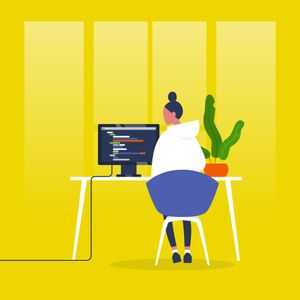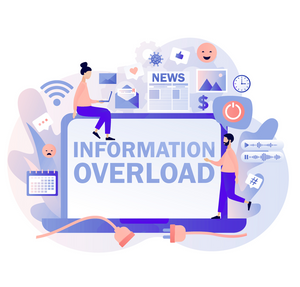What is a total experience strategy?
The total experience strategy is an emerging technology trend that merges multiple disciplines focusing on various business stakeholders’ experiences. Total-experience considers customers and employees across all channels through which they interact. The total experience has roots in what Joseph Pine and James Gilmore first define as the “experience economy.” They coin this term in a seminal book on the subject of an advanced future economy that derives value from converting a commodity into an experience (Pine and Gilmore 1999). Twenty-one years later, Gartner has identified “total experience” as a top strategic technology trend for 2021 (Burke 2020).
The total experience strategy pulls together siloed experience disciplines that are currently responsible for the creation and optimization of human experience across an organization:
- Multiexperience (MX) - The implementation of cross-device, multi-modality experiences
- Customer experience (CX) - How customers feel interacting with brand touchpoints
- Employee experience (EX) - How employees feel while working within a business
- User experience (UX) - The usability and enjoyability of a solution
Combining these domains’ management and execution under the same umbrella allows disconnected learnings to be shared and reduces inefficiencies. Furthermore, Burke et al. suggest that combining the experience functions makes a company more differentiated. As the four experience domains interact, they create unique solutions that cater specifically to the customer. These solutions are thus more difficult to copy than ones that arise from siloed experience teams. The following section explores these benefits in greater detail.
Why execute total experience?
The total experience strategy leads to benefits in operations, sales and business model differentiation.
Operational Benefits
Applying UX practices to improve EX can lead to a 1.5x increase in the likelihood of higher “effectiveness, productivity, intention to stay and discretionary effort” (Burke, 2020). A secondary benefit of combining EX with other experience domains, especially evident during Covid 19, is the improved ability to adapt to new working environments. CX and UX teams develop the agility to keep pace with rapidly changing customer demands. Applying CX and UX skills to EX creates responsive, personalized talent management techniques that increase engagement, retention, and productivity (Liley et al., 2017).
Business Development Benefits
When human experience is at the heart of decision-making within an organization, they are better preparing to participate in the growing experience economy. Identifying and building optimal human experiences has led to developing “human-centred design” (IDEO.org, 2015). Such solution design strategies place people’s desires at the start of the design process. Thus, companies can create highly competitive solutions on multiple levels. First, as more hopes, needs and wants are identified and satisfied, a human-centred solution will increase customer loyalty. Secondly, combining the four main experience fields to solve these human desires helps companies develop unique, complex solutions that are hard to tease apart and copy(Burke, 2020). Finally, having a competitive edge that is difficult to replicate creates a sustainable advantage over firms with siloed experience teams that develop quickly replicable solutions.
What new business models might emerge?
When all aspects of a business focus on improving the experiences that enrich our lives, they begin to shift toward the experience economy described in 1999 (Burke, 2020). This shift has implications in many sectors, including technology, government, and agriculture.
Technology
New experience management platforms have come into existence to support comprehensive experience strategies. One such experience management platform, Qualtrics, was acquired by SAP for $8B in November 2018 (Shu, 2018). This purchase is indicative of the value in the actual underlying commodity that will power the future experience economy; data. Qualtrics is an early sign of the types of new business models we are likely to see that depend on the extraction and processing of raw data to produce refined, hyper-personalized experiences. Just as other essential commodities are collected and moved along the value chain, new technology companies will emerge capable of handling and analyzing data for insights from every stakeholder experience across multiple platforms.
Government
As the private sector adopts total experience strategies, customers’ expectations are rising, putting pressure on the public sector to deliver a high-quality customer experience (D’emidio et al., 2019). Agencies that support the government in total experience management will help increase trust, achieve budgets, reduce risks and improve employee morale.
Agriculture
The agriculture sectors worldwide are battling the commoditization and devaluation of their crops and livestock. As a result, new businesses, such as local Calgarian company Bessie Box, are finding ways to apply total experience technologies in an effort that will ultimately support the de-commoditization of food. Bessie Box uses modern technologies to create multi-experience implementations for their customers and employees and has developed a scalable business model to connect livestock owners with meat processors and the end consumer.
What next?
As our economies continue to develop, the needs of the individuals within developed economies mature. While poverty still exists, there are many whose wants and needs have evolved to seek enriched experiences. This new human expectation extends to our lives as customers and employees of companies. We can more easily identify, catalogue, and service our desires with modern technologies. We live in a time where businesses can strive to provide experiential value for all parties involved en mass at a low cost.
A final thought as to where this all may be heading: As we continue to enhance total experience strategies, we will likely get to a point where we can automate the identification of novel, personalized experiences that are optimized for an individual but don’t yet exist. Assuming that AI-augmented design continues to improve, we may begin to see a convergence of these technologies leading to businesses that can identify and develop custom solutions for individuals at scale. This meeting of major experience technologies would usher in an era of mass hyper-personalized products and experiences.
Bibliography
Burke, B. (2020, October 19). Top Strategic Technology Trends for 2021. Gartner. Retrieved March 04, 2021, from https://www.gartner.com/document/3991906?ref=solrAll&refval=279691264
D'emidio, T., Greenberg, S., Heidenreich, K., Klier, J., Wagner, J., & Weber, T. (2019, September 10). The global case for customer experience in government. McKinsey. https://www.mckinsey.com/industries/public-and-social-sector/our-insights/the-global-case-for-customer-experience-in-government
Frias, A. (2014, October 30). Marketing In The ‘Total Experience’ Economy. Forbes. Retrieved March 04, 2021, from https://www.forbes.com/sites/theyec/2014/10/30/marketing-in-the-total-experience-economy/?sh=a21049b3f781
IDEO.org. (2015). The Field Guide to Human-Centered Design (1st Edition ed.). IDEO.org. ISBN: 978-0-9914063-1-9
Liley, M., Feliciano, P., & Laurs, A. (2017). Employee Experience Reimagined. Accenture Strategy. https://www.accenture.com/us-en/_acnmedia/PDF-64/Accenture_Strategy_Employee_Experience_Reimagined_POV.pdf
Pine, J. B., & Gilmore, J. H. (1999). The experience economy: work is theatre & every business a stage. Harvard Business School Press.
Shu, C. (2018, November 11). SAP agrees to buy Qualtrics for $8B in cash, just before the survey software company’s IPO. Tech Crunch. https://techcrunch.com/2018/11/11/sap-agrees-to-buy-qualtrics-for-8b-in-cash-just-before-the-survey-software-companys-ipo/





